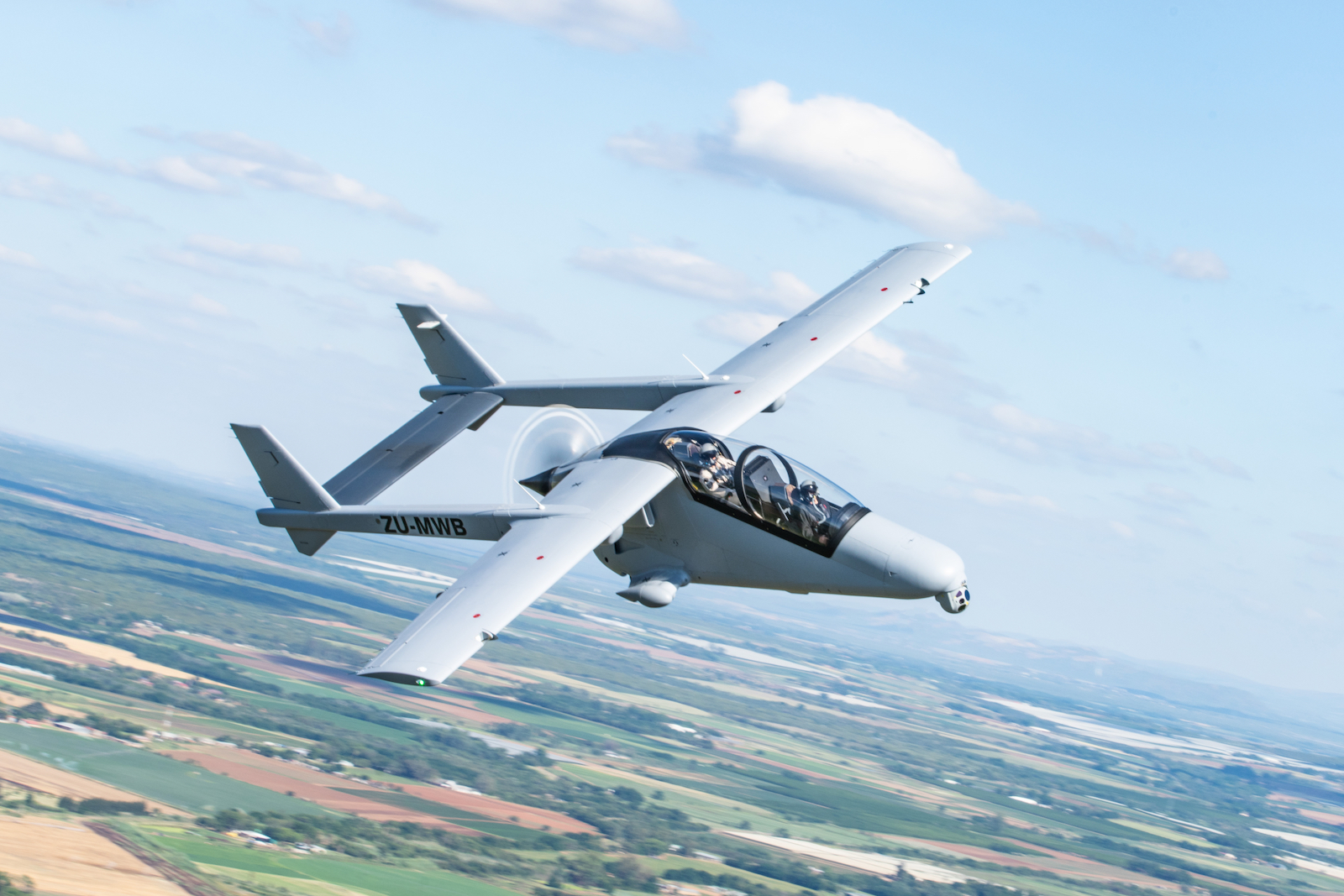
Business
FlightGlobal Takes to the Skies with Paramount’s Mwari
FlightGlobal was recently invited to Paramount’s aircraft production and test facility at Wonderboom Airport near Pretoria to experience the Mwari’s capabilities firsthand. The Mwari is a light tactical aircraft designed for low-cost, austere field operations. It is a two-seat, tandem cockpit aircraft with a high-wing and twin-boom pusher design. The weapons system officer (WSO) sits behind the pilot in a stadium-seating arrangement, offering a wide field of view.
Mwari: The African-built tactical aircraft taking flight
In the skies above Wonderboom National Airport near Pretoria, a new contender in the light tactical aircraft market is proving its mettle. The Mwari, a product of Paramount’s innovative engineering, is a versatile aircraft designed for intelligence, surveillance, and reconnaissance (ISR) missions, and it’s catching the attention of military forces in Africa and beyond.
A glimpse into Mwari’s capabilities
During a special preview hosted by Paramount, FlightGlobal’s test pilot Michael Gerzanics took to the air in the Mwari, for a series of demonstration flights. Accompanied by Paramount’s own test pilot, Mark Berg, Gerzanics experienced the aircraft’s operational potential first-hand.
The Mwari’s design is a testament to its mission-driven purpose. With a rear station equipped with a right-hand sidestick, rudder pedals, and a power lever, the aircraft is built for control and precision. The WSO benefits from a mission element controller and a 21-inch mission display that dominates the rear station, providing comprehensive control over the electro-optical system (EOS) and other mission systems.
Paramount advertises the clean-sheet Mwari as an ideal low-cost aircraft for ISR missions and so-called F3EAD (find, fix, finish, exploit, analyse, and disseminate) roles in austere environments.
Design and durability
For the ‘find’ aspect, the Mwari boasts a large bubble canopy that offers an expansive field of view for both the pilot and the WSO. The aircraft features a high-wing and twin-boom pusher propeller design configuration was chosen to enhance operations from unprepared surfaces, with the seats arranged in tandem, the aft weapons system officer sitting notably higher than the pilot for improved visibility. The Mwari’s primary structure is aluminum, with composites used for larger fairings.
The pilot’s displays are capable of showing output from the Argos-II sensor, supporting ISR tasks effectively. The aircraft’s design features a slightly forward-swept, high-mounted wing, enhancing its aerodynamic efficiency. The forward-sweep is essential to move the wing’s centre of pressure forward for longitudinal stability considerations. Moreover, the Mwari’s survivability is bolstered by the option to include electronic warfare equipment and ballistic protection panels.
From concept to reality
The journey of the Mwari began in 2010 with the Advanced High-Performance Reconnaissance Light Aircraft (AHRLAC) program, a collaboration between ADC, Paramount, and Aerosud. Despite facing legal challenges in 2019, Paramount took full ownership of the program and reignited its development, leading to the aircraft’s first deliveries to Mozambique and the Democratic Republic of the Congo in late 2022.
The Mwari’s onboard sensors are a critical component of its ‘fix’ function, with the Hensoldt Argos-II EOS being the most prominent. This advanced sensor system, mounted on the lower chin of the fuselage, is equipped with high-definition cameras for both daylight and infrared imaging, along with laser range finding and illumination capabilities, making it a powerful tool for surveillance and target acquisition.
The Mwari is equipped with a variety of sensors, including a chin-mounted Hensoldt Argos-II electronic observation/infrared sensor (EOS). The EOS offers a variety of high-definition daylight and infrared cameras, as well as laser rangefinder and illumination capabilities. The aircraft also has a large internal fuselage mission bay that can carry mission-specific pods. These pods can weigh up to 317kg and can be changed out in under 2 hours.
To ‘finish’ the job, for offensive operations, the Mwari can carry a maximum payload of 1,000kg on six external hardpoints, across its NATO-standard 14-inch racks, an impressive feat for an aircraft with a gross weight of just 4,500kg. The four outboard stations can each carry 280kg of ordnance, while the two inboard stations can each carry up to 300kg of ordnance or external fuel tanks. The aircraft is also capable of carrying a variety of smart weapons, allowing for precise targeting and reduced collateral damage.
While the Mwari does not currently have a visual aiming capability, due to the limited clearance between the canopy and the front cockpit glare shield, however, Paramount is working on integrating smart weapons that can be employed from safer heights and distances from threats, and enabling precise strikes with minimal collateral damage. The aircraft’s internal fuselage mission bay is a testament to its versatility. Capable of carrying various mission-specific pods weighing up to 317kg, this feature allows for rapid reconfiguration to suit different operational needs. The Mwari’s robust electrical system, capable of supplying 400kW of power, ensures that it can support the demands of modern, electronics-intensive warfare.
The Mwari in the global arena
The Mwari is a promising aircraft that has the potential to be a valuable asset for any military, and Paramount’s marketing efforts extended to North America, where the Mwari, rebranded as Bronco II, was a contender for the U.S. Air Force’s Armed Overwatch program. Although it did not secure the SOCOM contract, the Mwari has made significant strides towards South African and U.S. certification, signaling a bright future for this homegrown African aircraft. Paramount is actively working to enhance the Mwari’s capabilities, including the integration of unguided rockets and external gun pods, as well as smart weapons that can be deployed from safer altitudes and distances. These advancements were demonstrated during the Armed Overwatch competition for SOCOM with the Bronco II variant.
The Mwari stands as a symbol of African innovation in the aerospace industry. Its low-cost operation and adaptability to austere environments make it an attractive option for nations looking to enhance their ISR capabilities. As the Mwari continues to be put through its paces at Wonderboom, it’s clear that this aircraft is ready to soar into the demanding world of tactical aviation.
The Mwari, with its rugged design and multi-role functionality, is poised to become a valuable asset in tactical aviation, especially within its home region of Africa. Its development and production in South Africa highlight the country’s growing capabilities in the aerospace sector and its potential to offer a home-field advantage in the deployment of such advanced aircraft.
At the end of the preview flight, Michael Gerzanics noted satisfactorily that “while the turboprop light tactical aircraft space is well stocked with established and other new offerings, the Mwari is a welcome addition, with its internal pod system and pending smart weapons integration enabling it to make its presence felt over the battlefield.”
